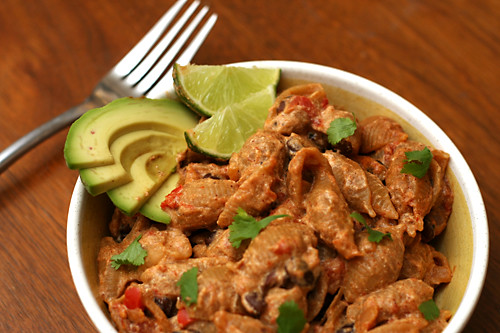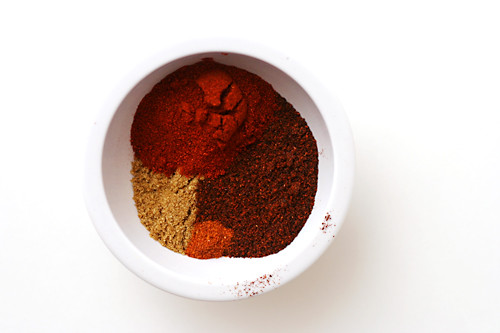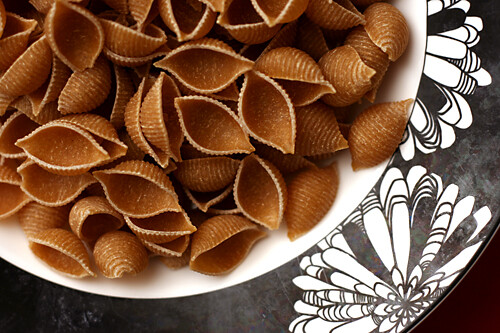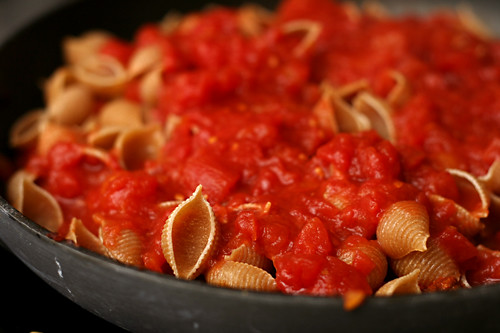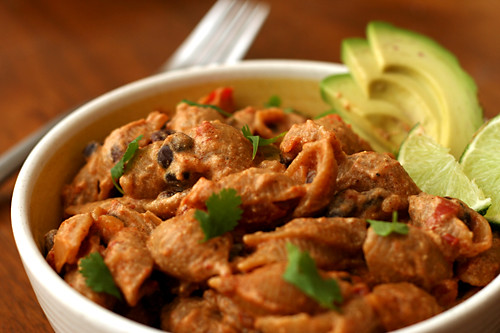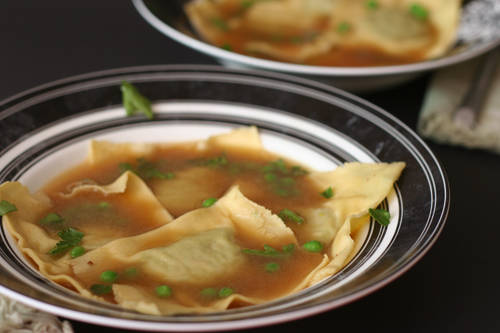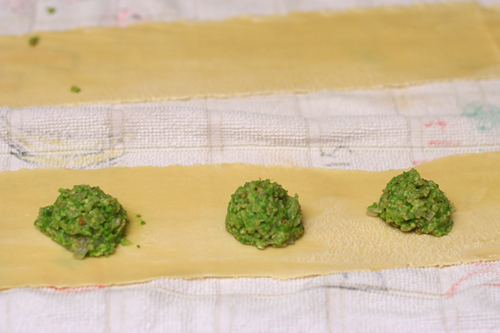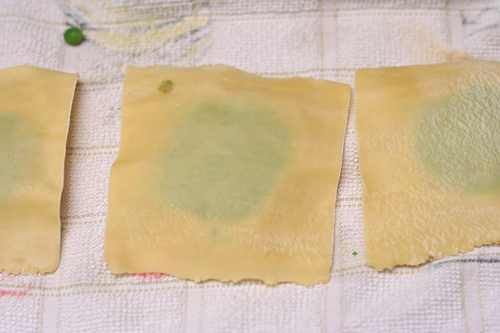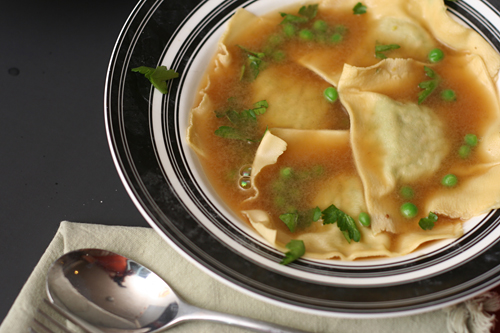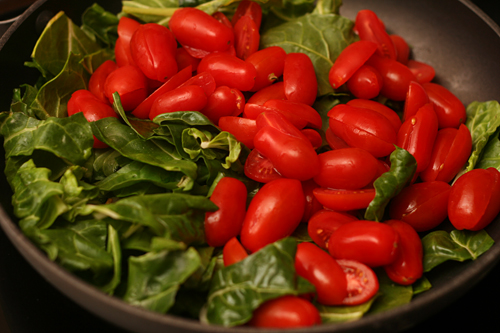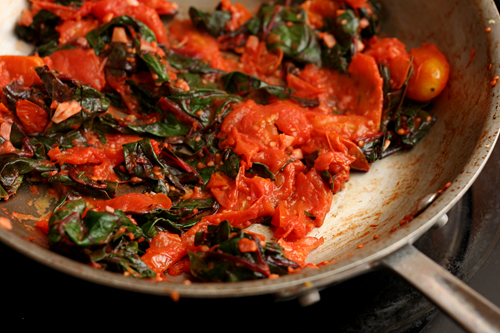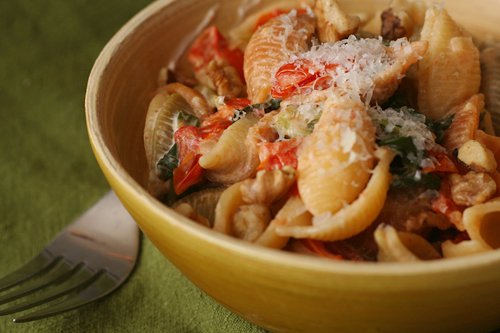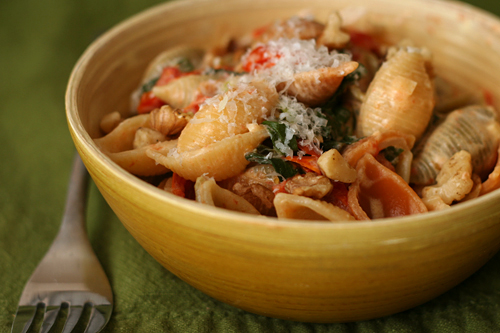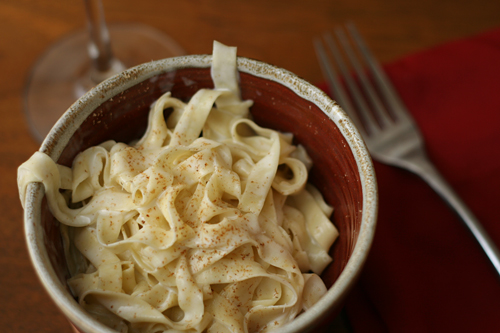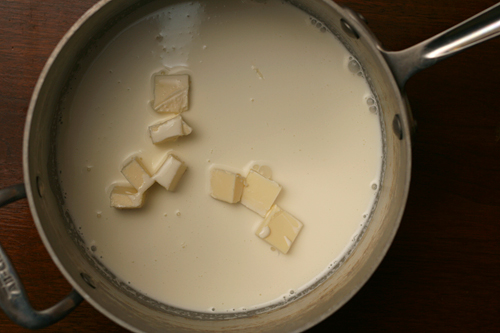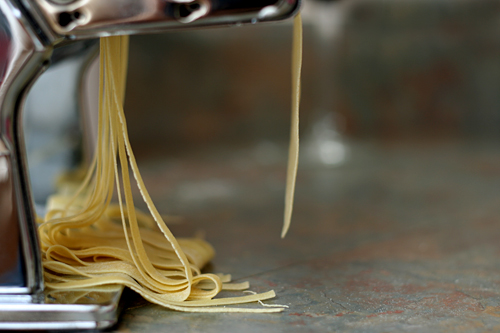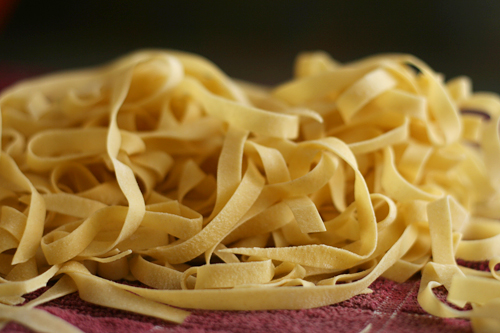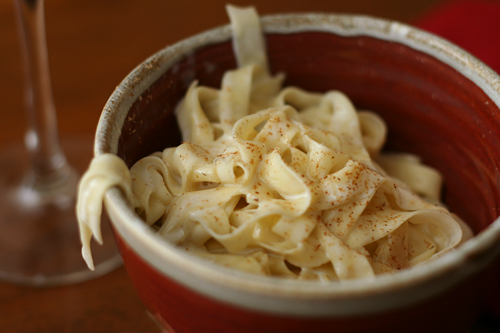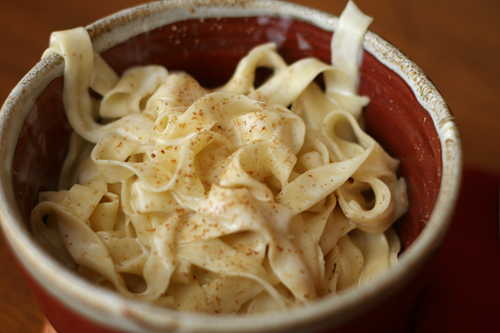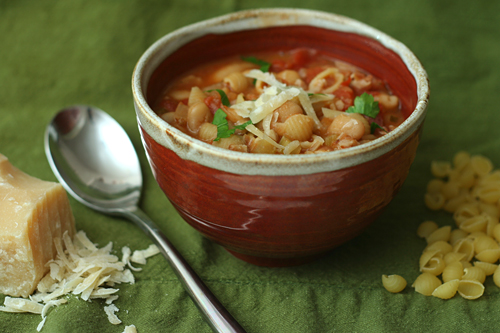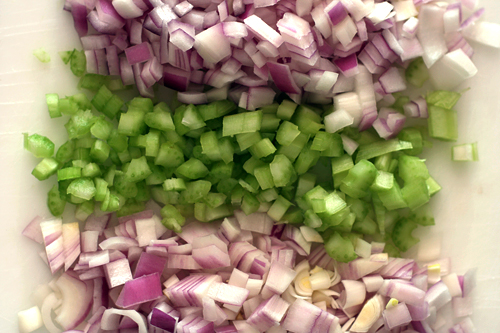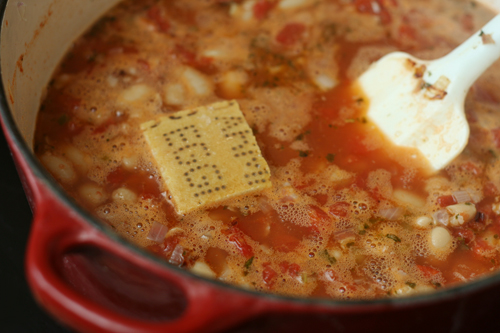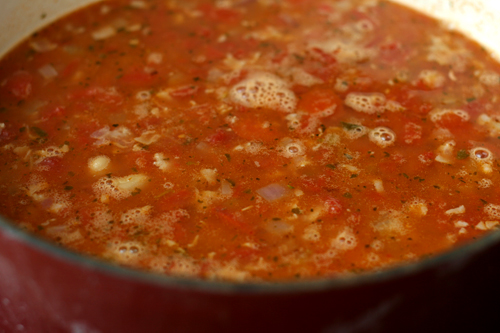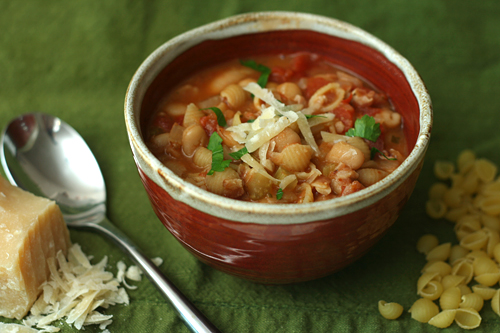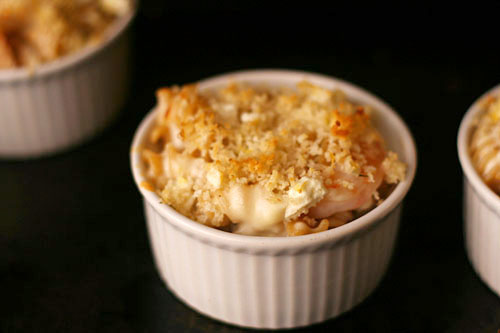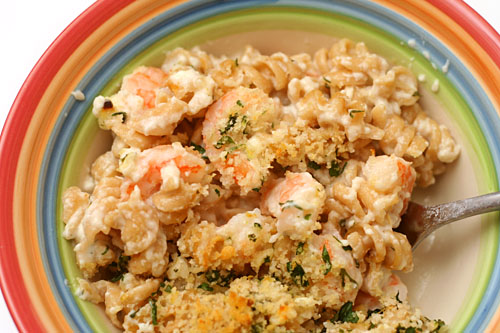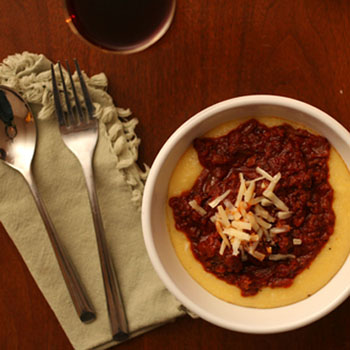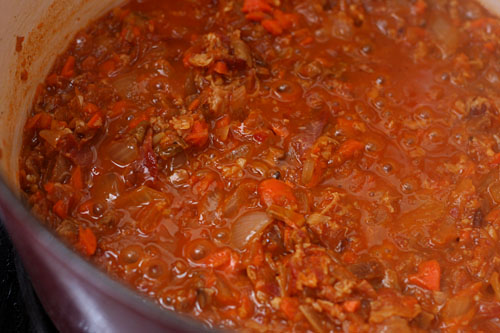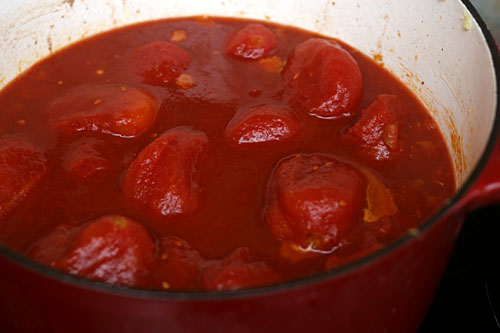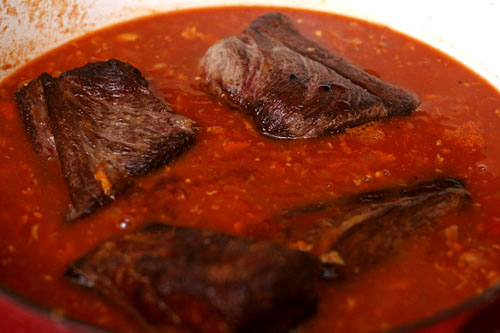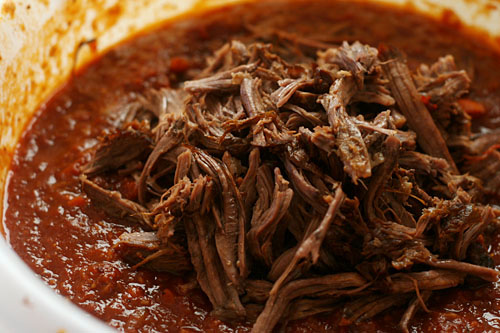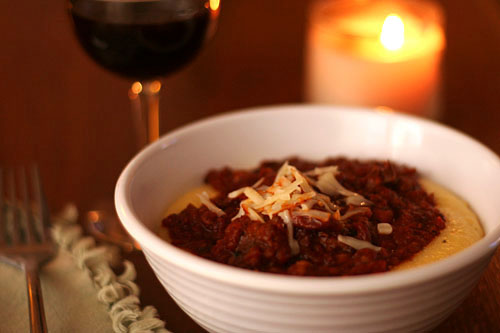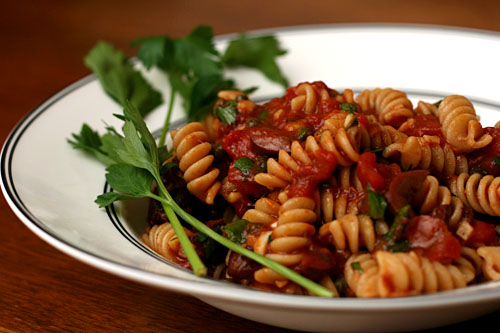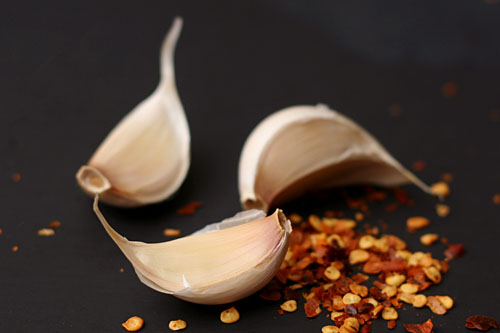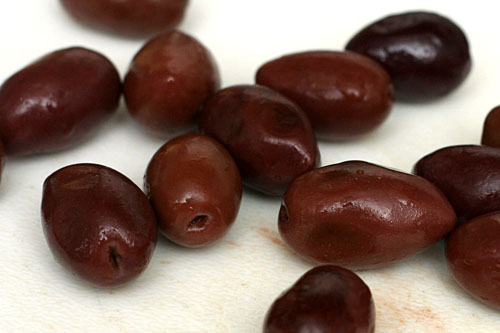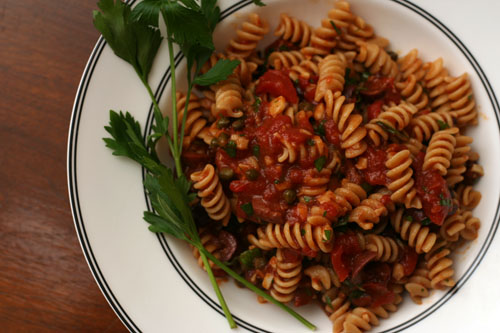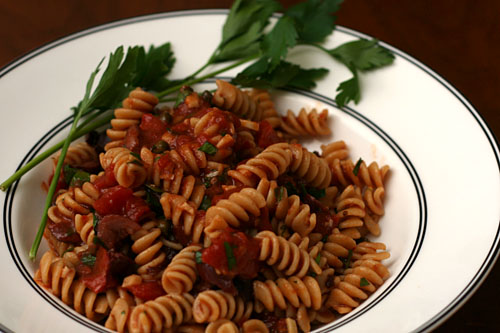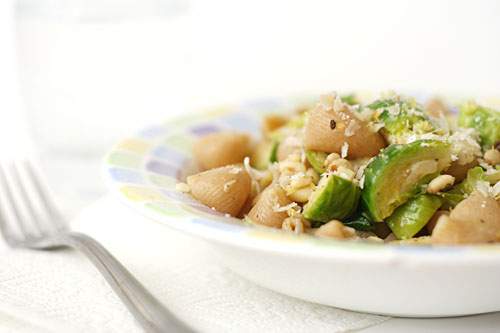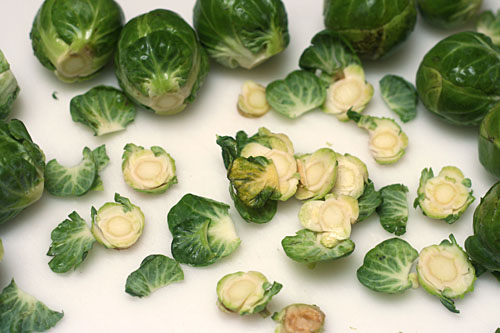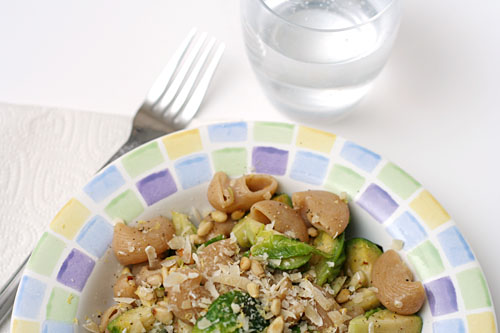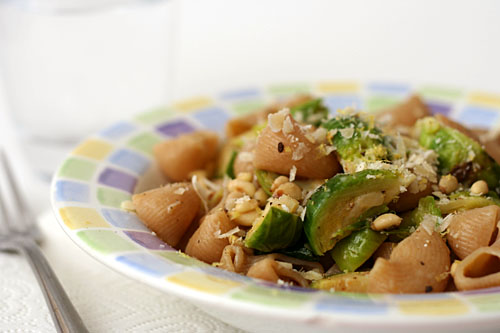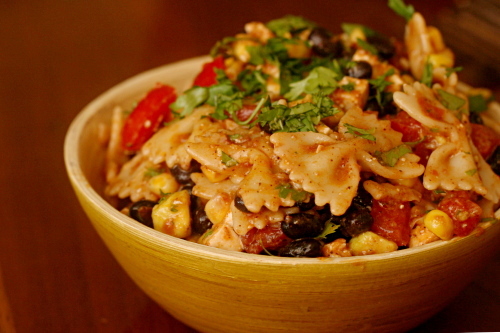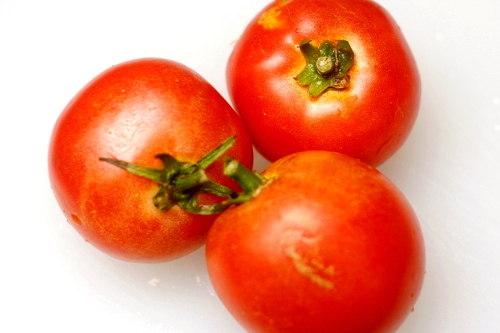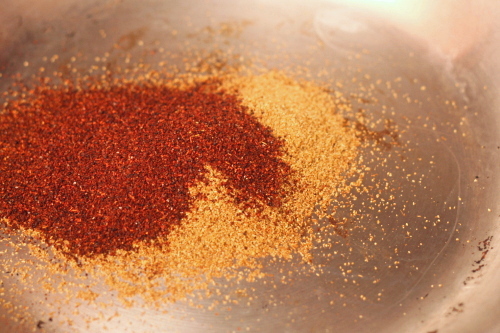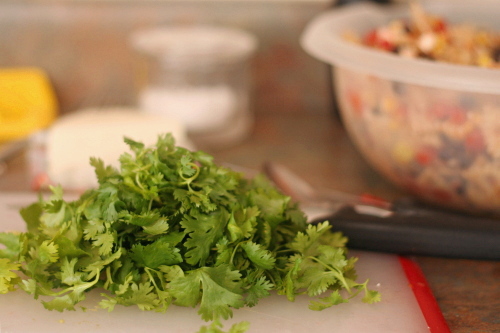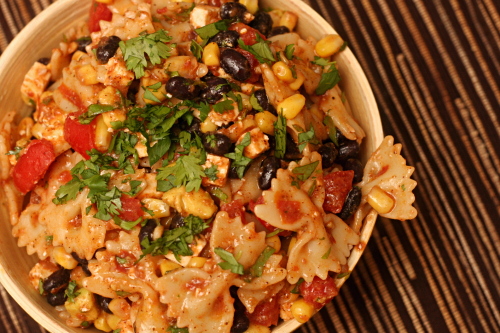I rarely miss eating meat on weekdays. I was never big on “meat and three” types of meals, so vegetarian food suits me just fine. Besides, it’s usually easy to replace meat with a substitute, and by substitute, I don’t mean fake meat (“smeat”, as my friend calls it). I mean beans, especially black beans.
Making this recipe vegetarian was no problem, but I was also determined to make it all in the same pot. I’ve made Cooks Illustrated’s Skillet Lasagna many times, in which the pasta is cooked right in the simmering sauce, so I adapted the same cooking method for taco mac. The different ratios of pasta to tomatoes complicated finding the right ratio of liquid to pasta, but after a few tries, I landed on the right amount.
What really gave me fits was how to make the sauce creamy in a healthy way – and if this was going to be a weeknight dish, it needed to be healthy. First, I tried Cara’s method of stirring in pureed cottage cheese. This worked fine, but I knew I was too lazy to puree cottage cheese for such a simple meal. Both unpureed cottage cheese and ricotta cheese looked curdled and barf-like. In the end, the answer, like it so often is, was Greek yogurt. It perfectly mimics the sour cream called for in the original recipe but with dramatically less fat and more protein.
Finally then, this fills all my qualifications as a great weeknight dish. It’s vegetarian, it’s healthy, it’s nutritionally balanced – all that and the only dishes you need to dirty are a cutting board, knife, and the cooking pot. With meals as good as this, it’s no wonder I don’t crave meat on weekdays.
One year ago: Pasta with Asparagus and Goat Cheese
Two years ago: Pork Tenderloin with Rhubarb Sauce
Three years ago: Pigs in a Blanket
Update: I changed the recipe to use ½ more water. Two cups might be enough, but it cuts it close. If your sauce is too liquidy at the end, it’s simple to simmer it down for a few minutes.
Printer Friendly Recipe
Creamy Taco Mac (adapted from Delish via Annie’s Eats and from Cook’s Illustrated’s Skillet Lasagna recipe)
6 servings
1 tablespoon olive oil
1 medium onion, chopped small
1 red pepper, chopped small
Table salt
3 medium cloves garlic, minced or pressed through a garlic press (about 1 tablespoon)
1 tablespoon ground chili powder
1 teaspoon ground cumin
¼ teaspoon ground cayenne
16 ounces dry pasta
1 (28-ounce) can diced tomatoes
2½ cups water
1 (30-ounce) can black beans, drained
1 (7-ounce) container Greek yogurt
2 tablespoons cilantro
1 avocado, diced (optional)
1. Heat the oil in a large nonstick skillet over medium heat until shimmering. Add the onion, pepper, and ½ teaspoon salt and cook until the onion begins to brown, about 5 minutes. Stir in the garlic and spices and cook until fragrant, about 30 seconds.
2. Add the pasta, diced tomatoes with juices, water, and beans. Cover and bring to a simmer. Reduce the heat to medium-low and simmer, stirring occasionally, until the pasta is tender, about 20 minutes.
3. In a small bowl, stir about half of the simmering pasta mixture into the yogurt. Stir this tempered yogurt into the pasta. Cover and simmer over low heat until heated, 2-3 minutes. Sprinkle with cilantro and avocado, if using. Serve.
